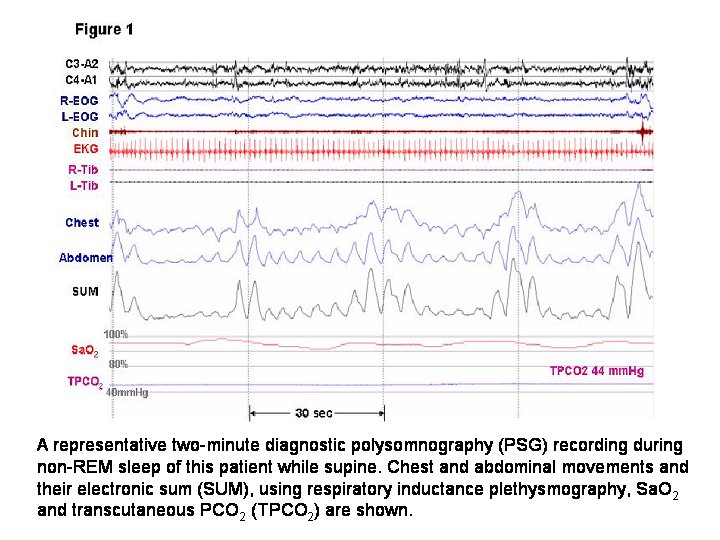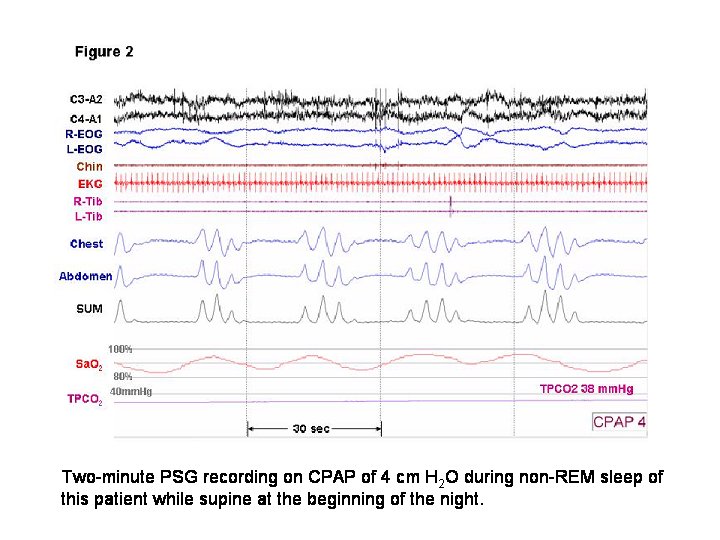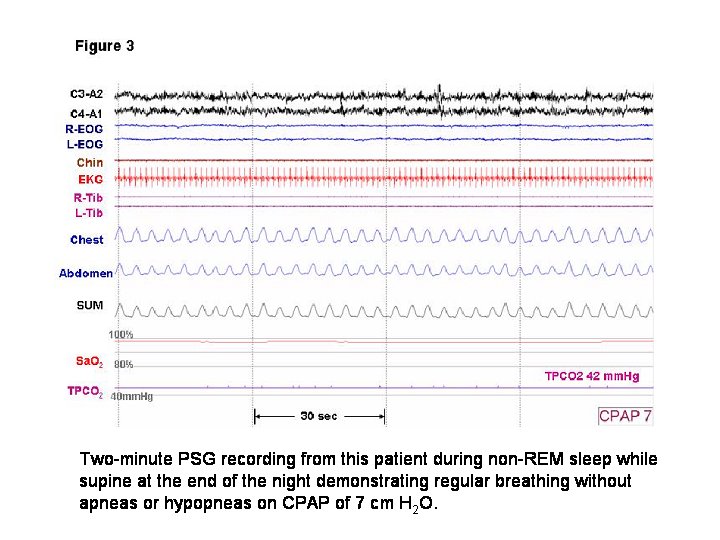Reviewed By Sleep and Respiratory Neurobiology Assembly
Submitted by
Dai Yumino, MD, PhD
Fellow
Sleep Research Laboratory of the Toronto Rehabilitation
Toronto General Hospital of the University Health
Centre for Sleep Medicine and Circadian Biology
T. Douglas Bradley, MD
Professor
Sleep Research Laboratory of the Toronto Rehabilitation
Toronto General Hospital of the University Health
Centre for Sleep Medicine and Circadian Biology
Submit your comments to the author(s).
History
Physical Exam
Lab
Figures
References
- Iber C, Ancoli-Israel S, Chesson Jr. A, Quan S. The AASM Manual for the Scoring of Sleep and Associated Events. Westchester, IL: American Academy of Sleep Medicine; 2007.
- Staats BA, Bonekat HW, Harris CD, Offord KP. Chest wall motion in sleep apnea. Am Rev Respir Dis 1984; 130:59-63.
- Gould GA, Whyte KF, Rhind GB, Airlie MA, Catterall JR, Shapiro CM, Douglas NJ. The sleep hypopnea syndrome. Am Rev Respir Dis 1988; 137:895-8.
- Sleep-related breathing disorders in adults: recommendations for syndrome definition and measurement techniques in clinical research. The Report of an American Academy of Sleep Medicine Task Force. Sleep 1999; 22:667-89.
- Cheyne J. A case of apoplexy, in which the fleshy part of the heart was converted into fat. Dublin Hospital Reports and Communications 1818; 2:216-223.
- Hall MJ, Xie A, Rutherford R, Ando S, Floras JS, Bradley TD. Cycle length of periodic breathing in patients with and without heart failure. Am J Respir Crit Care Med 1996; 154:376-81.
- Yumino D, Bradley TD. Central sleep apnea and Cheyne-Stokes respiration. Proc Am Thorac Soc 2008; 5:226-36.
- Xie A, Rankin F, Rutherford R, Bradley TD. Effects of inhaled CO2 and added dead space on idiopathic central sleep apnea. J Appl Physiol 1997; 82:918-26.
- Naughton MT, Benard DC, Rutherford R, Bradley TD. Effect of continuous positive airway pressure on central sleep apnea and nocturnal PCO2 in heart failure. Am J Respir Crit Care Med 1994; 150:1598-604.
- Naughton M, Benard D, Tam A, Rutherford R, Bradley TD. Role of hyperventilation in the pathogenesis of central sleep apneas in patients with congestive heart failure. Am Rev Respir Dis 1993; 148:330-8.
- Morgenthaler TI, Kagramanov V, Hanak V, Decker PA. Complex sleep apnea syndrome: is it a unique clinical syndrome? Sleep 2006; 29:1203-9.
- Gay P, Weaver T, Loube D, Iber C. Evaluation of positive airway pressure treatment for sleep related breathing disorders in adults. Sleep 2006; 29:381-401.
- Dernaika T, Tawk M, Nazir S, Younis W, Kinasewitz GT. The significance and outcome of continuous positive airway pressure-related central sleep apnea during split night sleep studies. Chest 2007; 132:81-87.






